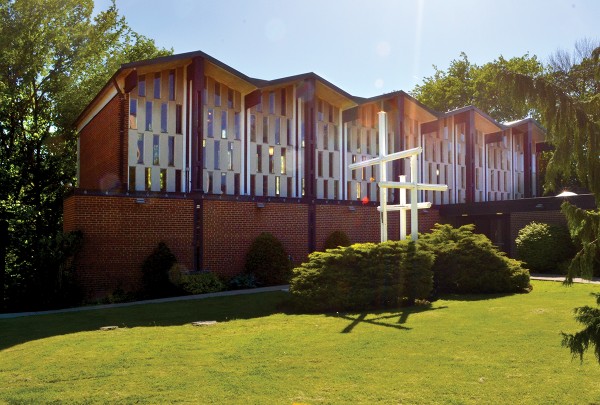The Summer 2013 issue of Spacing is jammed packed with a slew of great articles, photos, and interviews focused on Toronto urbanism. This article appears in the issue in our Features section. For more unique articles focused on the public realm of Toronto and Canadian cities pick up a copy today. Find your copy in these stores.
Excerpt from “A Higher Calling” by Graeme Bayliss
Few institutions are as resistant to change as religious ones. Based on immutable doctrines that are thousands of years old, Christianity and Judaism have long reflected their inherent traditionalism in the architecture of their churches and synagogues. But in the mid-20th century, Christian and Jewish architectural praxes modernized, even if their dogmas remained relatively constant.
The shift from traditional Western religious architecture, with its elaborate ornamentation and utilization of expensive materials, to the generally simple and unadorned Modernist style was not precipitated merely by a change in architectural vogue — after all, when it comes to cultural trends, the sensitivity meter of religious institutions typically operates on a delay of decades. Rather, it was part of a concerted push by religious leaders to shed their elitist image and demystify their practices.
The shift from traditional Western religious architecture, with its elaborate ornamentation and utilization of expensive materials, to the generally simple and unadorned Modernist style was not precipitated merely by a change in architectural vogue — after all, when it comes to cultural trends, the sensitivity meter of religious institutions typically operates on a delay of decades. Rather, it was part of a concerted push by religious leaders to shed their elitist image and demystify their practices.
To read more of this article by Graeme Bayliss pick up the latest issue of Spacing or subscribe.
Photo by Matthew Blackett


